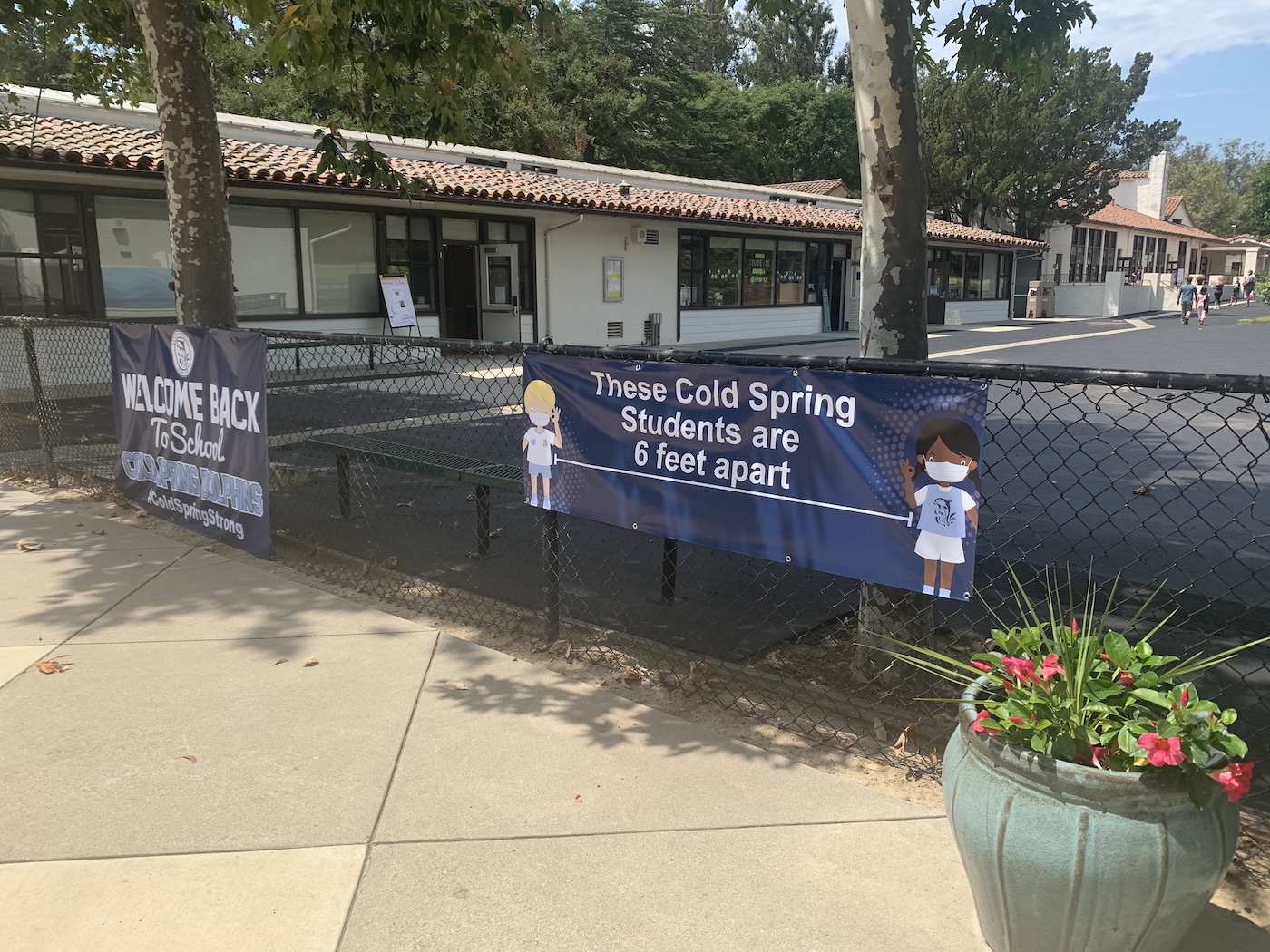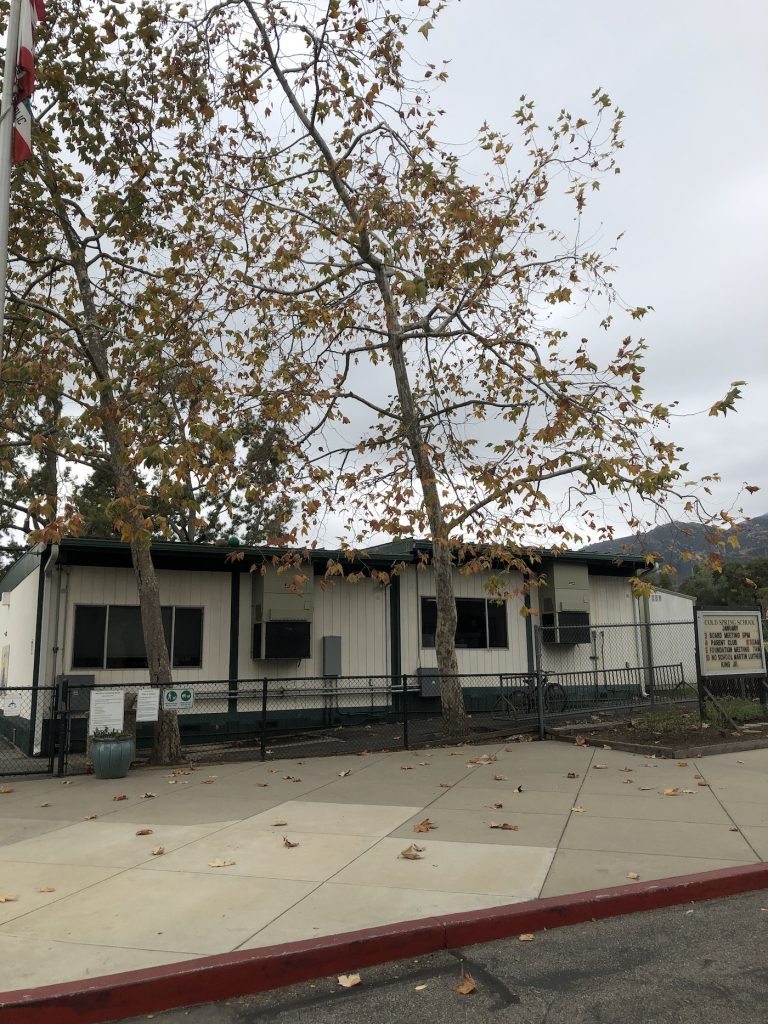Cold Spring School Bond Measure Moves Forward

Earlier this summer, the Cold Spring School Board of Trustees approved a school bond measure on the upcoming November ballot, the first of its kind in 12 years. Measure L2020 is a $7.8M bond that will be used to fund much-needed infrastructure improvements and to fund a new classroom building to replace the dilapidated portables currently on campus.
The bond measure has been in the works for years, as the board has been focused on replacing the two remaining portable buildings, which are over 25 years old and well past their useful life. A third portable building, which housed art classes, was removed last year after it was in disrepair. Recent growth in the enrollment on campus has highlighted the issue of the dilapidated portables even more, as the two remaining portable classrooms, which, in pre-COVID days, housed the afterschool program and special education, are beginning to rust and deteriorate rapidly.
In 2016 the board voted to move forward with a new building to house classrooms and administrative offices; this new plan builds on those ideas, with plans for a 6,000 sq. ft. building to house three classrooms as well as the front office staff, and offices for school specialists. The classrooms, which will be outfitted with the newest technology including collapsible walls and integrated outdoor learning space, will be used for STEAM and art classes, allowing for continued collaboration between classes and teachers.
The proposed building will be the new gateway to the school, giving a place for visitors to check in before coming onto campus. When the school was first built in 1889, the entrance to campus was along Sycamore Canyon Road, before it became a busy state highway. For safety purposes, a wall was erected at some point in the ‘70s or ‘80s, to protect the campus from the traffic; the entrance to the school was moved east to the parking lot on Cold Spring Road. However, the office and administration building remained in the center of campus, causing visitors to have to enter the campus before checking in with campus officials, which many have considered a security issue.

The new building, which will fit in architecturally and aesthetically with the current buildings, will improve campus security, and the parking lot will be reconfigured, allowing for better traffic circulation. The current office space will be used to expand the library, converting the library from a traditional book library to a media center. Improvements to existing infrastructure on the 100-year-old existing buildings include repairing or replacing roofs and restrooms, as well as repairing or replacing aging water/sewer lines, fire alarms, and schoolwide communication systems, among several other maintenance items. The funds will also allow for ADA improvements.
Earlier this year, the plans called for a bond measure of $9.8M, a small portion of which was earmarked for unallocated reserves for future maintenance of the campus. After a recent survey of constituents, as well as taking into consideration the changed economic climate due to the ongoing COVID-19 crisis, the board decided to lessen the ask, scaling back the bond measure to $7.8M over a 30-year period. “We are cognizant of the current climate, and want to be respectful of the community,” said Board President Jennifer Miller, who added that the school has significant deferred maintenance as well as the need for more classrooms, and the board agreed it was not prudent to wait another two years for the bond. “We need these repairs to happen,” she said.
Increased enrollment is also a factor, and as it stands, there are not enough classrooms to maintain the small class sizes for which Cold Spring is known. “My child’s classroom is the library this year,” Miller said. The current enrollment is 178, up significantly over past years. By reducing the bond authorization, the District will be making adjustments to the bond program to reduce the project scope accordingly. “We believe that most of the projects will be completed, albeit in a more cost-effective or reduced scope manner,” Miller said. The District will also be soliciting State matching funds for modernization for older facilities allowing them to make up some of the shortfall.
The bond money will not be used to enhance outdoor learning areas, according to Miller, as there has been an internal fundraising campaign among parents in order to quickly be able to get kids back on campus. According to Miller, COVID-19 has further illuminated the need for continued small class sizes, in order to offer social distancing in classrooms. The District has a fund that was established some years ago that was to be used in conjunction with a bond program. These funds were set aside from the District’s general fund reserve, and the current balance is $540K. “We would use these funds to augment the Bond Program budget,” she said. “We are considering using some of these funds towards improving outdoor learning environments, if needed.”
If passed, Measure L2020 will cost district residents $13-$14 per $100K of assessed value per year. The last measure to pass was Measure C ($2.4M) in 2008, which was approved after the failure of two previous ballot measures in November 2006 (Measure K for $14M) and February 2008 (Measure R for $8.75M). Measure C funds went to renovate the seven older classrooms and two student restrooms in the main school building, as well as improvements to the play areas with a new play structure, blacktop, and new landscaping on the corner of Cold Spring Road and Sycamore Canyon.
It’s expected that the earliest construction would commence is 2022-2023.
For more information, and to read the bond measure in its entirety, visit www.countyofsb.org.







